Apo Whang-Od - Fabled Filipino Tattoo Artist Still Active At 106
At 106, Apo Whang-od not only continues to breathe life to an ancient art of tattooing from a Philippine tribe, she has also made history by becoming the oldest cover model of a fashion magazine! She appears on the April 2023 issue of no less than Vogue Philippines.
Author:Paolo ReynaReviewer:James PierceApr 19, 202389 Shares1.9K Views
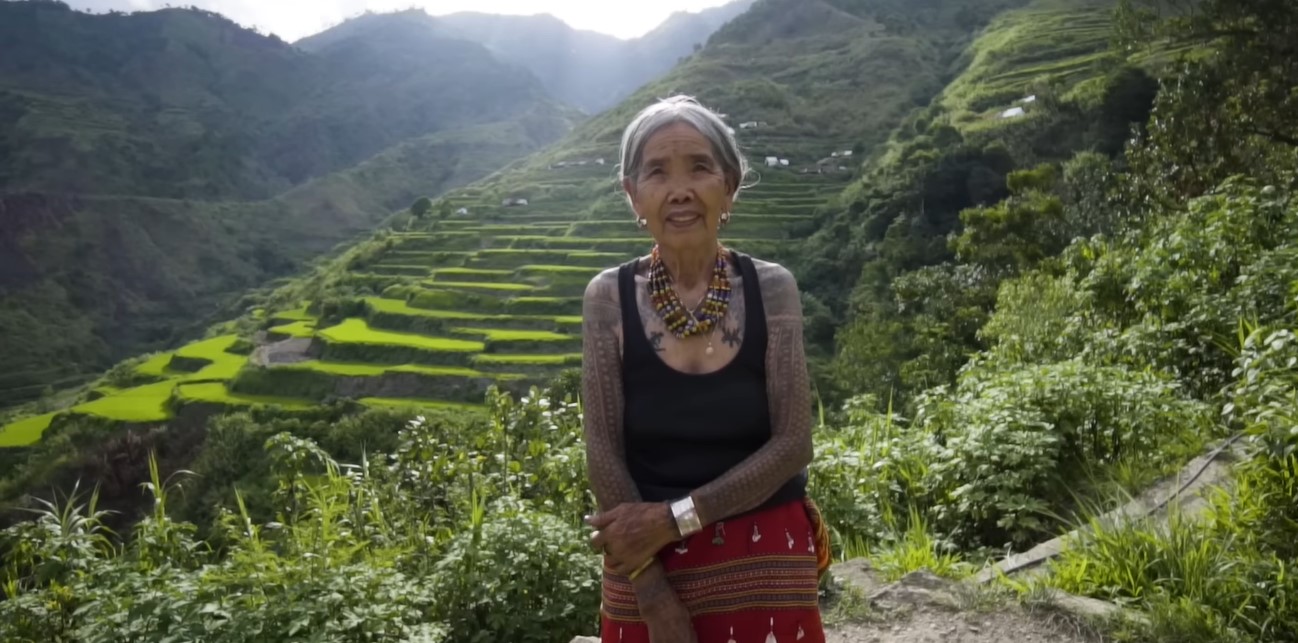
Considered to be the last traditional tattoo artist of her generation, Apo Whang-Odhas gained local and international recognition for her work.
Her traditional tattoos are done by hand-tapping using a “thorn” needle and ink made from a mixture of soot and water.
The tattoos are often inspired by Kalinga motifs and are believed to be imbued with spiritual and cultural significance.
Apo Whang-Od has recently graced the cover of a local edition of a famed international fashion magazine.
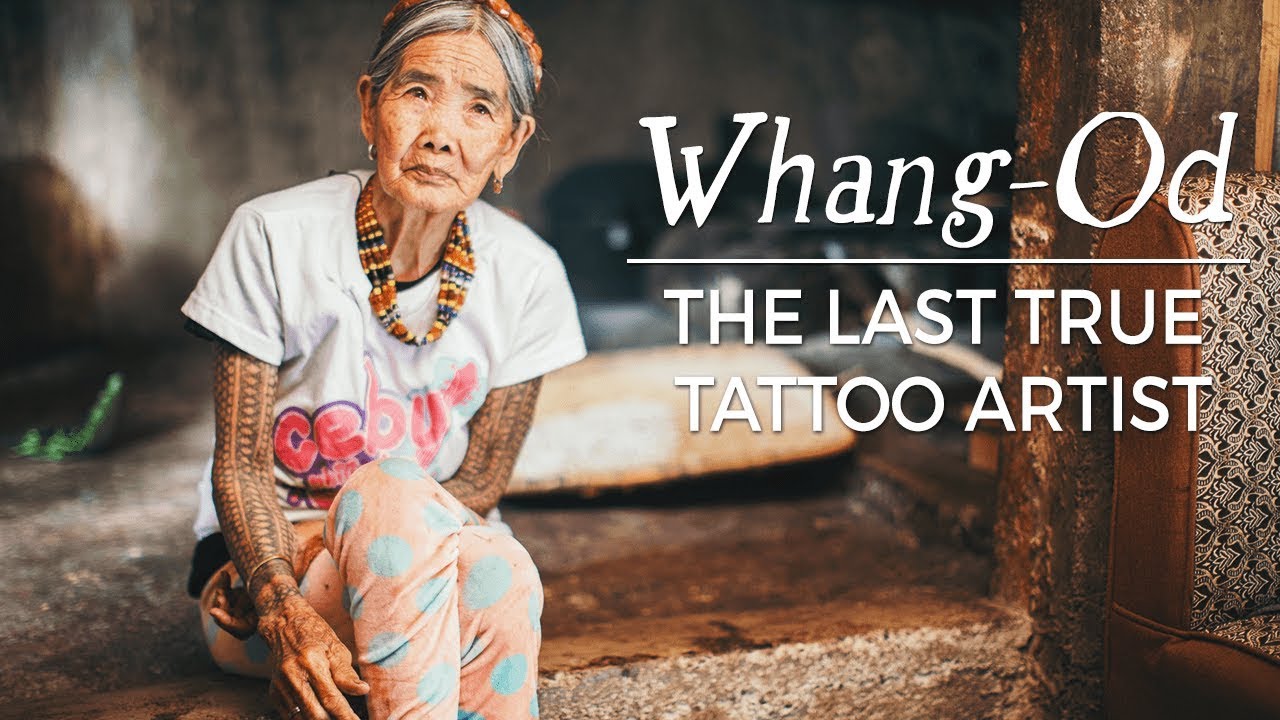
Whang-Od: The Last True Tattoo Artist | Short Film
Who Is Apo Whang-Od?
Apo Whang-od is a renowned traditional tattoo artist from the Philippines.
She was born on February 17, 1917 in Buscalan, Kalinga Province.
Whang-od learned the art of traditional Kalinga tattooing or pambabatokfrom her father, who was also a tattoo artist or mambabatok.
She began practicing the art form when she was 15 years old and continued it throughout her life.
She uses a traditional thorn and bamboo method to create intricate designs on the skin.
Whang-od’s fame began to spread in the 2000s, thanks in part to her inclusion in documentaries and articles about traditional tattooing.
Tourists began to visit her village to receive tattoos from her, and she became a cultural icon in the Philippines.
In 2018, she received the Dangal Ng Haraya Award, becoming the first Kalinga and oldest Filipino to receive the award.
Apo Whang-od continues to tattoo people in her village, and at 106 years old, she remains a beloved figure in Filipino culture.
| Information | Details |
| Name | Maria Oggay |
| Other names | Apo Whang-od; Fang-od; Whang-od Oggay |
| Birthdate | February 17, 1917 |
| Age | 106 (in 2023) |
| Birthplace | Buscalan, Tinglayan in Kalinga Province, Philippines |
| Ethnic Group | Butbut |
| Civil Status | Single |
| Occupation | mambabatok (traditional tattoo artist) |
Apo Whang-Od Tattoo
Batek is a traditional body art form that originated from the Kalinga tribe, an indigenous communityin the Cordillera region of the northern Philippines.
The art of batek involves tapping a thorn or needle dipped in ink into the skin, creating intricate designs that are often inspired by nature.
In a 2013 video documentary by the University of the Philippines alumnus Pacifico Andreo S. Magno titled The Journey North: Through the Eyes of Kalinga Tradition, Apo Whang-od said in Kalinga, her native language (and translated to English by Francis Pa-in):
“„I am very happy to hear that Kalinga tattoos are now starting to be known not only here up in the mountains [of Kalinga] but also elsewhere.- Apo Whang-od
Batekis a sacred and meaningful practice for the Kalinga people, and it is commonly used to mark important events such as:
- weddings
- funerals
- other rites of passage
The designs can range from simple lines and patterns to complex, elaborate motifs that take several days to complete.
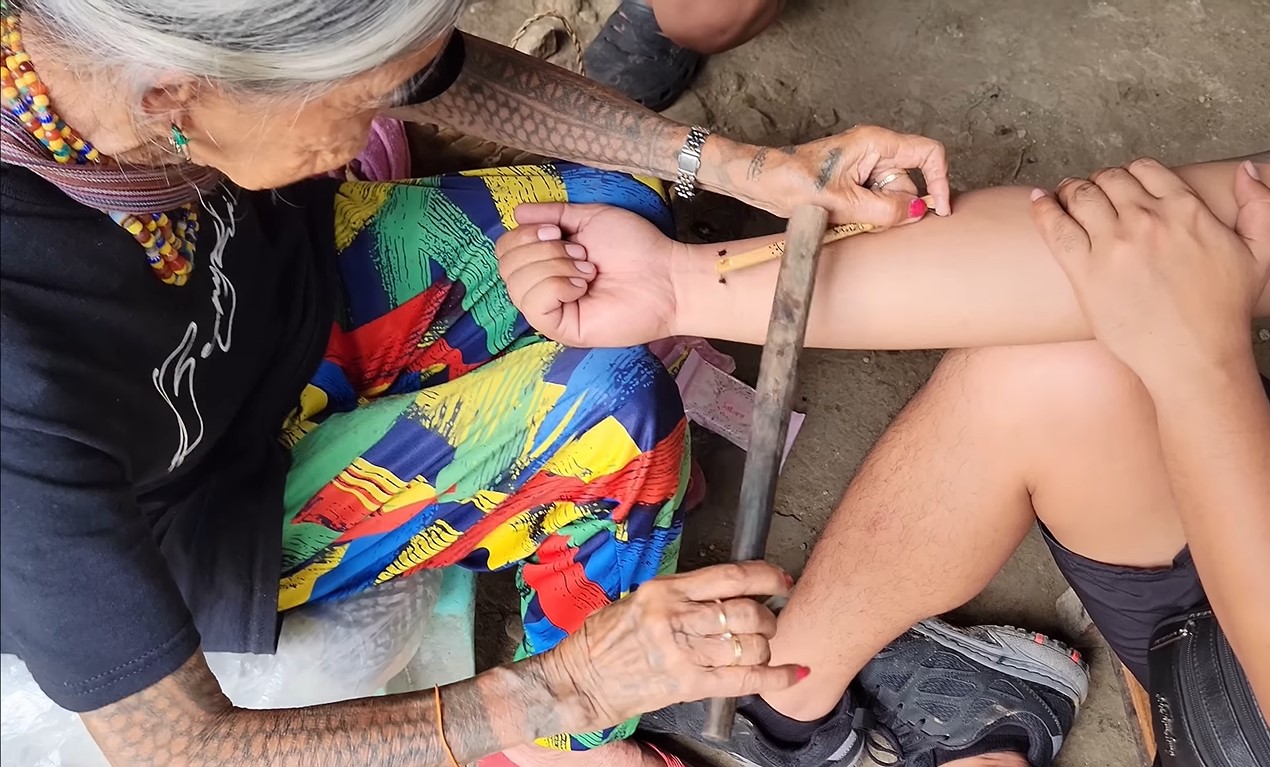
In addition, they are often based on an individual’s:
- personal beliefs
- family lineage
- experiences
“„“[Batek is] distinctively known for its symmetric and intricate designs that detail the valor and bravery of ancient tribal warriors, and is customarily applied through a hand-tapped pricking method using intrinsic instruments such as carabao [water buffalo] horns and fruit thorns.- Senate of the Philippines - 19th Congress Press Release (February 27, 2018)
The fruit thorns, reported CNN Philippines, could either be from a calamansi(Philippine lime or Philippine lemon) or pomelo (a citrus fruit) tree.
The process of creating batektattoos is meticulous and requires great skill and patience.
The artist must first draw the design on the skin using a charcoal stick, then carefully tap the thorn or needle into the skin, following the lines of the drawing.
The process is repeated until the desired depth and color are achieved.
The tattoos are believed:
- to bring protection
- to have healing properties
- to serve as a sign of strength and bravery
Today, batektattoos have gained popularity beyond the Kalinga tribe and are recognized as a unique art form, with huge thanks to Apo Whang-od.
However, an article published by BaguioCityGuide.com in April 2021 expressed concern about the future of pambabatok:
“„As a spiritual practice, Mambabatokscan only impart the art form to their bloodline, and since Apo Whang-od didn’t have children, it was feared that there will be no more Mambabatokswho will carry on the tradition for the next generations to come.- Baguio City Guide article (April 22, 2021)
The good news is that, according to the same article, as apprentices, the great-nieces of Apo Whang-od received training from her in 2011.
Apo Whang-Od Award
The National Commission for Culture and the Arts (NCCA) of the Philippines bestowed to Apo Whang-Od the Dangal ng Haraya Awardfor her significant contributions to the country’s traditional arts and crafts.
On June 25, 2018, the conferment ceremony happened at the Capitol Tourism Plaza, aka Kalinga Capitol Plaza, in Tabuk City, Kalinga, reported ABS-CBN’s Push.
Incumbent Philippine Senator JV Ejercito and Filipino actor Raymart Santiago attended the event. The legendary mambabatok, herself, gave each of them a tattoo after the ceremony.
Dangal Ng Haraya Award For Intangible Cultural Heritage
Given annually by the NCCA and was first conferred in 2012, it is awarded to individuals or groups that have made significant contributions in preserving, promoting, and protecting the intangible cultural heritage of the Philippines.
Intangible cultural heritage refers to the practices, traditions, expressions, knowledge, and skills that are passed down from generation to generation within a community.
These can include music, dance, theater, rituals, festivals, and other forms of cultural expression.
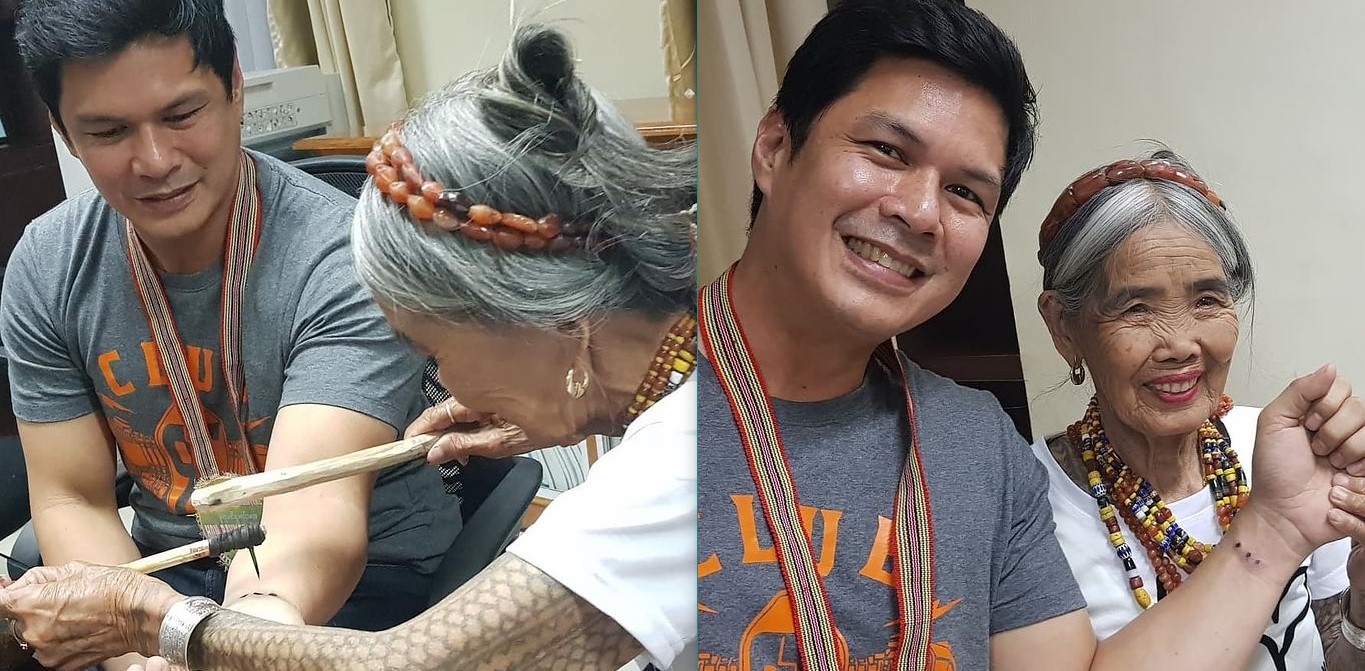
Gawad Sa Manlilikha Ng Bayan (GAMABA) Award
Translated to English as the National Living Treasures Award and given every three years, it is considered one of the highest honors that can be given to a Filipino cultural worker.
It was established in 1992 by the Philippine government:
- to recognize the living cultural treasures of the Philippines
- to promote the preservation and promotion of traditional arts and crafts
Three senators each filed a resolution to nominate Apo Whang-od for the GAMABA Award, namely:
- Miriam Defensor-Santiago (1945-2016) - Senate Resolution No. 1602 (October 1, 2015)
- Nancy Binay - Senate Resolution No. 2 (June 30, 2016)
- Sonny Angara - Senate Resolution No. 538 (November 7, 2017)
From the 2018 press release mentioned earlier, Senator Angara said,
“„She tattooed countless warriors and head-hunters of her tribe . . . the continuity of the batekis anchored on the well-being of Whang-od being the last living mambabatok, which necessitates immediate action to preserve the folk art.- Philippine Senator Juan Edgardo “Sonny” M. Angara
Most recently, in 2021, the Sangguniang Panlalawigan(provincial council) of Tabuk City, Kalinga, passed Resolution No. 2021-061 to nominate her for the GAMABA, according to BaguioCityGuide.com.
Apo Whang-od was nominated under this category: Social Practices, Rituals, and Festive Events - Traditional Tattooing.
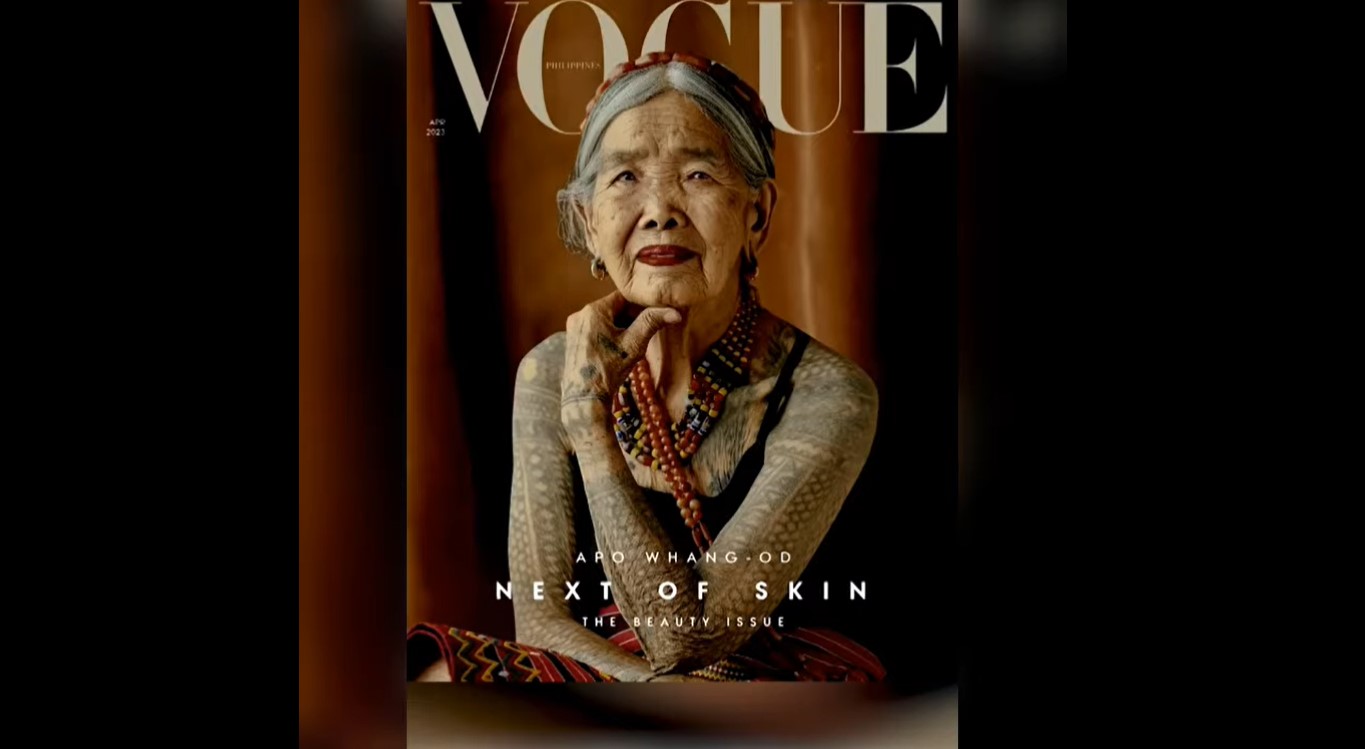
Apo Whang-Od Vogue Cover
In April 2023, Apo Whang-od graced the cover of Vogue Philippines, becoming the oldest person to ever appear on the cover of the fashionmagazine.
The cover has her name on it and the words “Next of Skin” and “The Beauty Issue.”
The magazine, which debuted in the country in August 2022, featured her as a symbol of timeless beauty, strength, and cultural heritage.
The decision to feature Apo Whang-od on the cover of Vogue Philippines was widely celebrated, with many people praising the magazine for promoting cultural diversity and representation.
On April 14, 2023, Bea Valdes, the editor-in-chief of Vogue Philippines, told the hosts of CNN Philippines why they put her on the cover:
“„It was definitely a unanimous decision by the whole team . . . she is a local legend and just this story that one person’s endeavors can . . . revive a dying craft. We thought that was very, very powerful.- Bea Valdes
However, some critics argued that the cover was a form of cultural appropriation, as it showcased traditional indigenous tattoos without proper recognition of their cultural significance.
Despite the controversy, Apo Whang-od’s appearance on the cover of Vogue Philippines helped to bring attention to the unique beauty and cultural heritage of the Philippines.
It likewise sparked important conversations about the representation of indigenous cultures in the fashion industry.
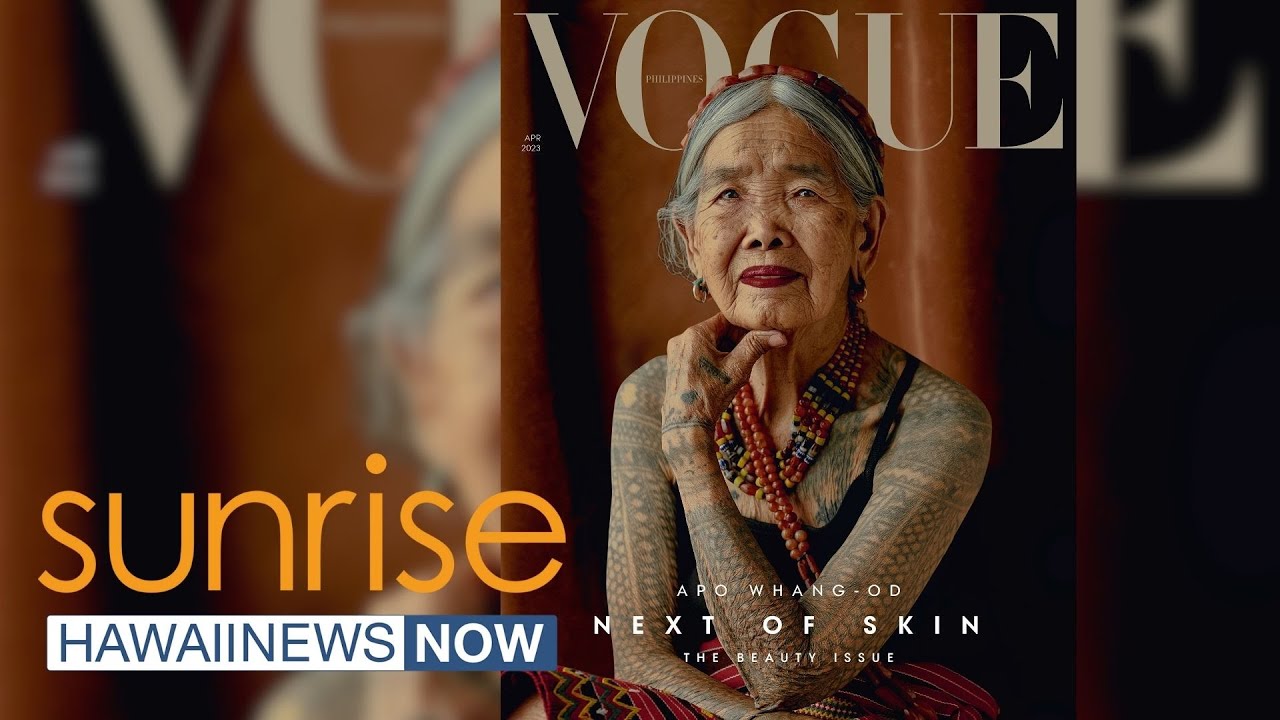
What's Trending: 106-year-old Filipino tradition tattoo artist is Vogue's cover model
People Also Ask
How Much Is A Tattoo From Apo Whang-Od?
Per hiketomountains.com, a tattoo costs 300-2,000 in Philippine peso (roughly $5.30-$35.50), depending on the size.
How To Go To Apo Whang-Od?
Apo Whang-Od lives in Buscalan, a village in the municipality of Tinglayan in the Province of Kalinga in the northern part of Luzon, one of the three major islands of the Philippines.
Here’s one option (for NCR-based Filipino residents):
1. Go to Tabuk, Kalinga Province (a bus ride from Quezon City could be 11-12 hours long).
2. From Tabuk City, travel further to the municipality of Tinglayan.
3. In Tinglayan, there’s a jump-off point to Buscalan village near a junction.
4. In Buscalan, get the services of a local tour guide to accompany you (by foot - meaning, hiking and trekking) to Apo Whang-Od’s location.
How Painful Is Batok?
In his eponymous blog, Filipino-American tattoo practitioner Lane Wilcken from Las Vegas wrote that “it does hurt,” but when compared to a machine, the batokprocess is “soothing and less painful.”
Final Thoughts
Apo Whang-od is a living legend.
For more than 80 years, she has been preserving a cultural legacy through her traditional hand-tapped tattoos.
Batekis a deeply spiritual and cultural tradition that should be respected and understood in its original context.
Through Apo Whang-od and her great-nieces, the legacy shall live on.

Paolo Reyna
Author

James Pierce
Reviewer
Latest Articles
Popular Articles